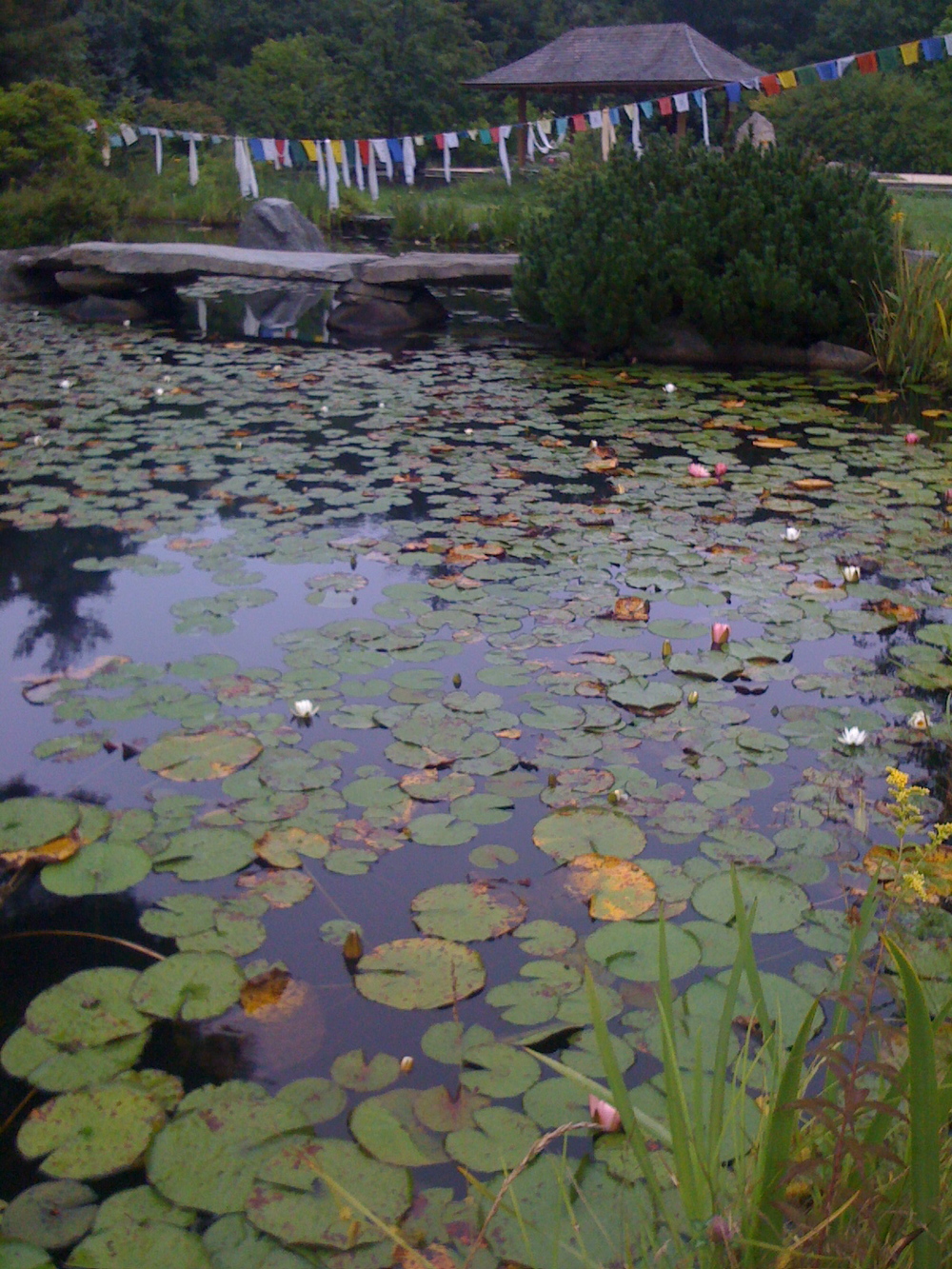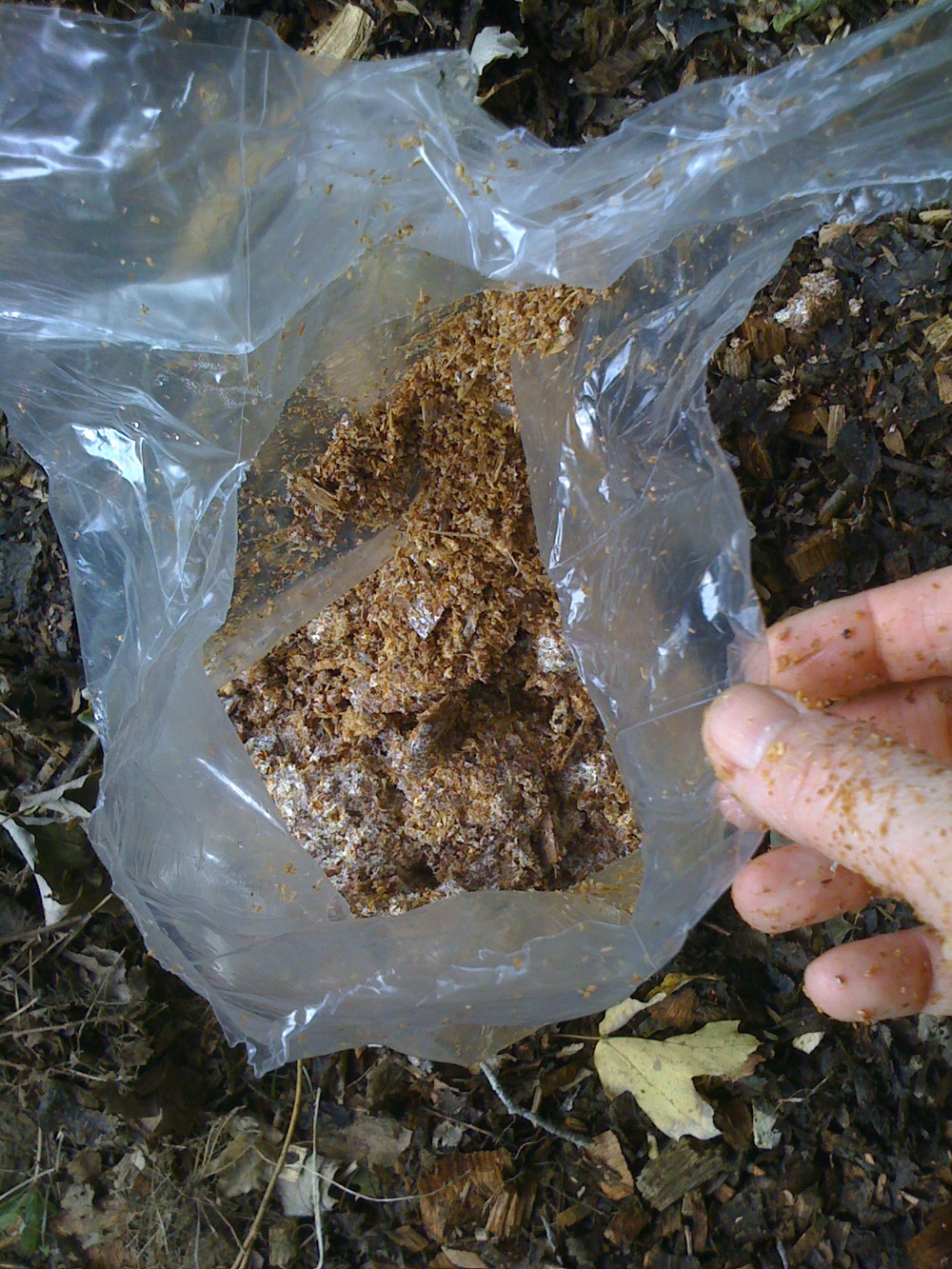In August, I had the good fortune to be able to attend the NOFA (New England Organic Farming Association) conference in Amherst, MA. It was a bit strange, going back to a place I had lived soon after college, when I worked for the Massachusetts Public Interest Research Group. Back in 1994, I rented a big old farmhouse with Shannon and Kim, two friends and colleagues, and in the little spare time we had, we'd admire the fields surrounding the house or drive out to the Peace Pagoda, a Buddhist shrine dedicated to peace and non-proliferation. It's a sacred spot, and one I knew the Sisters would enjoy, so after the NOFA conference we made a quick visit there.

Being back in Leverett, just north of Amherst, was a bit of a reawakening for me--or, perhaps better, a reminder that I have long loved wooded areas, big tall towering trees, and quiet spaces. Somehow I had forgotten these affinities of mine during my years in the city, and so it was striking to find myself back in western Massachusetts, and to realize that the farm where I now live is an awful lot like the farmhouse I lived in 15 years ago...that I've returned to an aspect of myself that has been dormant for a long time.
But that's not what I meant to write about tonight. Mostly I just wanted to jot down a few words and post a few photos about mushrooms! But, wait! Don't just think of the mushrooms you eat, for what's really mindblowing are mycelium, those delicate webby networks you sometimes see in the soil or in piles of decaying woodchips. Mycelial networks are actually the more prevalent stage of mushrooms' existence, with miles of mycelium in the ground underneath your feet, digesting organic matter into the soil and making it more fertile. What we think of as mushrooms are actually the "fruitings" of mycelium, happening only under certain conditions. At the conference, we were enthralled by Paul Stamets, a big name in the field of mycology (see his talk on TED which is fascinating, esp. his work to combat pollution and disease through mycelium), and his presentations spurred us to integrate mycelium into our farming.
We learned from Stamets that mycelium work together with (alongside or actually interwoven into) plant roots, channeling nutrients to plants. If you can help encourage the flourishing of mycelium in your garden, you can help your plants become more robust and plentiful. So one of the first things I did when I returned from NOFA was sit down to read his book Mycelium Running, and figure out how we could best incorporate mycology into our farming efforts. In short, we decided to dust our seeds with mycelium spores before planting, and to start up a few mushroom patches that would get garden vegetable-friendly mycelium networks growing in our two biggest gardens. We decided to do this in combination with rock dust and other soil amendments, in order to replenish the minerals and nutrients that have been depleted in our soil from decades of farming. Happily, these two efforts are complementary, because mycelium break down larger mineral nutrients into smaller particles, making them available to plants. We won't see the impact of these efforts for a year at least, since the rock dust takes time to break down and the mushroom patches take a year to fruit...but we are hopeful that these actions will help nourish the soil over time.
The mushroom patches are great because they not only help build better soil, but they also (eventually) provide you with food, so that's double the fun. Anne and I created "beds" of various organic matter for the mycelium to feed upon, with a couple inch layer below and a couple more inches on top. The "Garden Giant" mushroom apparently prefers woodchips, while the Garden Oyster snacks on straw. And the Shaggy Mane is not too particular, but happy to be mixed in with compost or mulch or whatever you've got on hand.
Here's how we went about the process:
 First we cleared an area about 4'x8' (this was a little larger, because I wanted to leave a border around the actual patch). Then, we "broadcast" (sprinkled around with wide movements of our arms) rock dust (in the white bucket) to increase the nutrient level of the soil, and then lay down woodchips on top of the whole patch. It took three full wheelbarrows to lay down the first layer of woodchips. You're basically making an edible home for the mycelium to devour, so that the bed can really flourish. Once the bed is well established, you can take some of the woodchips and put them in other areas of the garden to get the mycelium running there, as well.
First we cleared an area about 4'x8' (this was a little larger, because I wanted to leave a border around the actual patch). Then, we "broadcast" (sprinkled around with wide movements of our arms) rock dust (in the white bucket) to increase the nutrient level of the soil, and then lay down woodchips on top of the whole patch. It took three full wheelbarrows to lay down the first layer of woodchips. You're basically making an edible home for the mycelium to devour, so that the bed can really flourish. Once the bed is well established, you can take some of the woodchips and put them in other areas of the garden to get the mycelium running there, as well.
 Then, we sprinkled the myceliated spawn that we had purchased from Stamet's organization, Fungi Perfecti, on top of the layer of woodchips. What you see in the bag in this picture is sawdust and a few woodchips that have been "inoculated" with mycelium and allowed to begin developing mycelial networks. Some of the handfuls I took out of this bag were nearly completely white as the mycelium had intensively colonized the wood; other handfuls were less developed and more granular.
Then, we sprinkled the myceliated spawn that we had purchased from Stamet's organization, Fungi Perfecti, on top of the layer of woodchips. What you see in the bag in this picture is sawdust and a few woodchips that have been "inoculated" with mycelium and allowed to begin developing mycelial networks. Some of the handfuls I took out of this bag were nearly completely white as the mycelium had intensively colonized the wood; other handfuls were less developed and more granular.

When all the spawn was put to bed, we covered them up with a nice thick layer of organic material. In the case of the Garden Oyster mushrooms, we used straw, their preferred comestible. Here's a picture of Anne, distributing the last of the straw to tuck in the spawn in their new home, in and among the asparagus forest. Asparagus is a spring vegetable, and when it goes to seed, it develops tall delicate fronds, which provided great shade for our farm cats, and now, hopefully, will be a good habitat for our new mushroom allies :)
So that's all for the mushrooms at this point, at least in terms of what we can do to help them along. This is one of the aspects about farming that is a good practice for my life in general: learning to let go. You do what you can, but at some point, you realize that it's no longer in your hands. There's a whole host of variables outside your control, and maybe the best thing you can do is just bow your head to the soil and the microbes and the fungi and the worms, say a little prayer for them to all flourish, and then turn and head back to the barn or the hearth, to dream of mycelium running...
